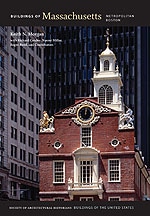When landscape architect Charles Eliot envisaged the master scheme for the Boston Metropolitan Park System (1892–1893), he assigned to individual municipalities the responsibility for creating small urban parks and playgrounds. In 1893, the Boston Park Commission gave Eliot his only opportunity to design such a facility for Boston. By the 1890s, the North End was one of the most densely inhabited urban districts in the United States. Through the urging of councilman (later mayor) John “Honey Fitz” Fitzgerald, Copp's Hill Terrace was built as the largest open space in this teeming district. The two granite terraces abut the colonial Copp's Hill Burying Ground (NE13) on one side and North End Park, a bathing beach that Eliot designed across Commercial Street, on the other. As Eliot wrote in sadness to his wife in 1895, Copp's Hill Terrace provided a recreation retreat for “the slum people . . . unclean beings, children pushing everywhere and swarming in every street and alley” (Charles Eliot, Landscape Architect, 485–86).
You are here
Copp's Hill Terrace
If SAH Archipedia has been useful to you, please consider supporting it.
SAH Archipedia tells the story of the United States through its buildings, landscapes, and cities. This freely available resource empowers the public with authoritative knowledge that deepens their understanding and appreciation of the built environment. But the Society of Architectural Historians, which created SAH Archipedia with University of Virginia Press, needs your support to maintain the high-caliber research, writing, photography, cartography, editing, design, and programming that make SAH Archipedia a trusted online resource available to all who value the history of place, heritage tourism, and learning.


















